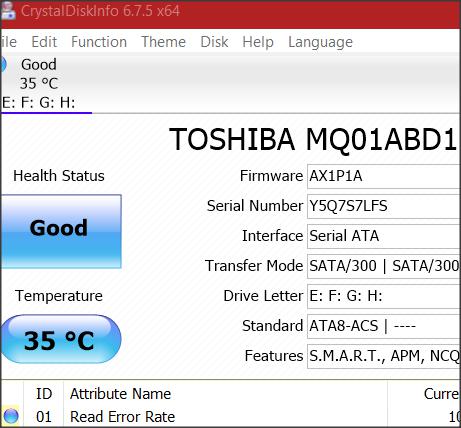Windows 10 Slow Boot After Anniversary Update

The Slow Boot up issue on Windows 10 after installing updates, commonly is caused because of an outdated or incompatible program or device driver. In other cases the issue is caused because some critical updates may contain bugs that they haven't fixed yet from Microsoft.In this tutorial you 'll find instructions to resolve the Slow boot up issue on Windows 10 OS after installing a critical update. How to FIX Windows Slow Boot Problem.
Windows 10 users are facing slow boot-up issue after using the free upgrade offer. Here I'm going to tell you how to fix it. Aug 15, 2016 - Windows 10's biggest update is freezing some PCs. Titled: 'Windows 10 may freeze after installing the Anniversary Update' and states there have been. Given the problem stops many users' PCs from booting correctly,.
Perform a Clean boot1. Simultaneously press the Windows + R keys to open the ' Run' command box.2. In run command box, type msconfig press Enter to open the System Configuration utility. Select one by one all startup items and click Disable.7. Finally click OK and restart your computer.8.
Check if the boot up time is faster. If it is okay, then open the System Configuration (msconfig) utility again and enable one by one the disabled services and programs and restart your system, until you find out which one cause Windows 10 to boot slow.Step 2. Disable Fast Startup.1.
At the search box type control panel and press Enter.2. Change the View B y (at the up right) to Small icons and then click Power Options.3.
First-passage phenomena and their applications pdf. The Physics of Living Processes: A Mesoscopic Approach iscomprised of five principal sections:. Author:Thomas Andrew WaighISBN:273Genre:ScienceFile Size:76.82 MBFormat:PDF, DocsDownload:628Read:152This full-colour undergraduate textbook, based on a two semestercourse, presents the fundamentals of biological physics,introducing essential modern topics that include cells, polymers,polyelectrolytes, membranes, liquid crystals, phase transitions,self-assembly, photonics, fluid mechanics, motility, chemicalkinetics, enzyme kinetics, systems biology, nerves, physiology, thesenses, and the brain. The comprehensive coverage, featuring in-depth explanations ofrecent rapid developments, demonstrates this to be one of the mostdiverse of modern scientific disciplines. Building Blocks.
At the left pane, choose Choose what the power buttons do. In device manager, expand the Display Controllers.4.
Right click on the installed Display Adapter and select Uninstall device.5. At the warning window, check first the ' Delete the driver software for this device' checkbox and click Uninstall.6. Restart your computer.7. After restart, proceed and reinstall the latest driver software for your VGA device from manufacturer's support site. Note: In some occasions, the installation of an oldest version of the VGA driver, can fix the slow Windows 10 boot up issue.Step 4. Disable Ultra Low Power State (ULPS) on AMD Graphics AdapterULPS is a sleep state that lowers the frequencies and voltages of non-primary cards in an attempt to save power, but the downside of ULPS is that is can cause your system to startup slow if you 're using an AMD graphics Adapter.
To disable ULPS:1. Simultaneously press the Windows + R keys to open the ' Run' command box.2.
In run command box, type regedit press Enter to open the Registry Editor.3. From Edit menu click Find.4.
In search box type EnableULPS and press Find Next.5. Double click at the ' EnableULPS' highlighted value and modify the value data from 1 to 0. Click OK when done.6. By pressing the F3 key, find the rest ' EnableULPS' values and change the value data from 1 to 0.7. When done, close registry editor and restart your computer.Additional help: If after restart you still experience the slow boot up issue and you have a laptop with two graphics adapters (e.g.
Intel & AMD), then open Device Manger and disable the second adapter. right click on the 2nd adapter (e.g. AMD) and choose Disable device. Then reboot.Other Solutions to fix the Slow Boot Up problem on Windows 10.1.
Uninstall and reinstall the latest version of your Antivirus/Security program.2. Reset Windows 10 from Settings - Update and security – Recovery. During the recovery process you 'll be asked to keep or not your personal files.4. Backup your files to another storage media and then perform a, by using the.That's it! Let me know if this guide has helped you by leaving your comment about your experience. Please like and share this guide to help others.
After installing the Windows 10 anniversary update, my computer boots very slow. The first part of booting (bios, loading Windows) is as fast as it used to be, but after logging in I'm stuck on a black screen with just my cursor for over a minute before it seems to continue with the login.I made a to explain what I mean.Also, when I shutdown, Windows says that Spotify is blocking the shutdown - Which is strange because why would Spotify do this?
Next
It will stay on this screen for about a minute until it just gives up and I'm back on my desktop with everything except Spotify shut down. If I click 'Force shutdown' or close Spotify before shutting down, everything works fine.EDIT:I have done some boot traces as requested by @magicandre1981 and @nijave - They have now been removed because they were eating up my Google Drive storage.I don't get this issue when the computer reboots, only when it's completely shut down and started again later. So I'm not sure the traces are of much help.